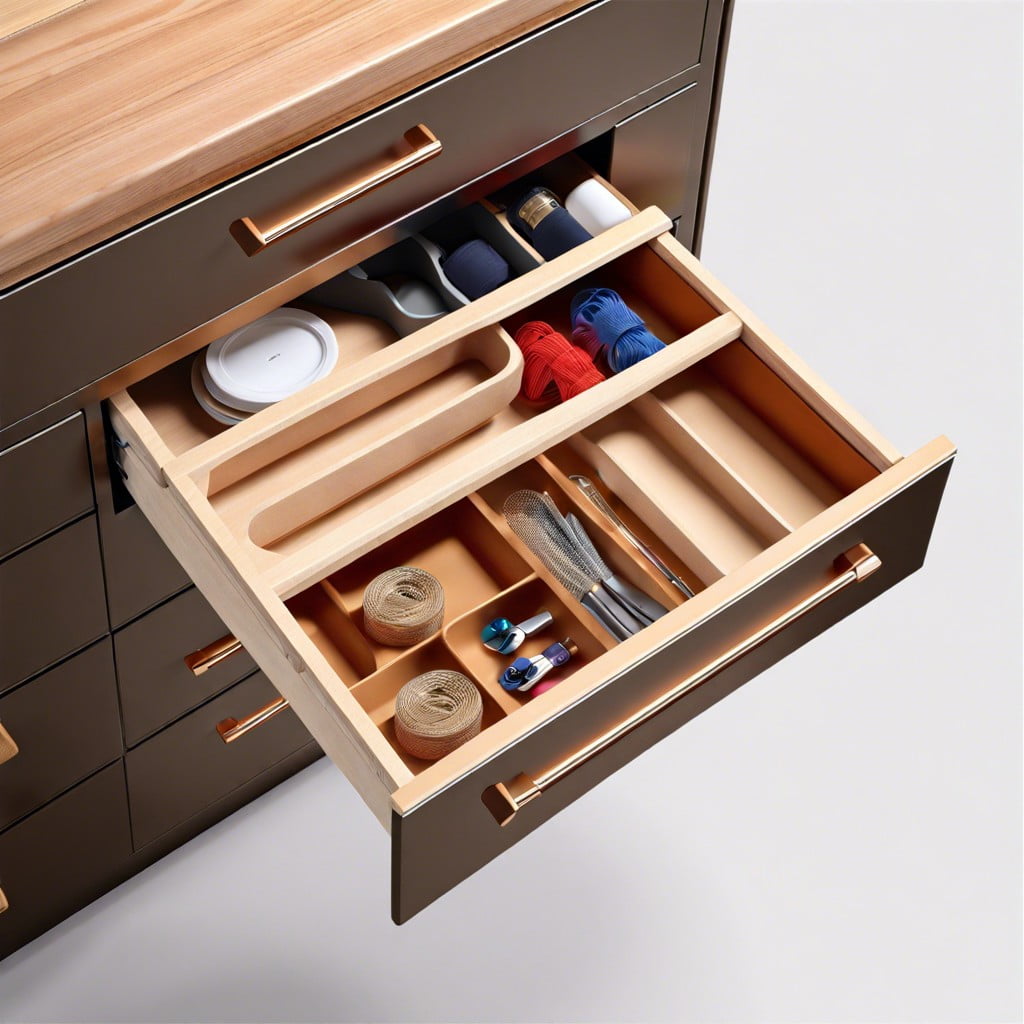Learn practical strategies to begin decluttering your space without feeling overwhelmed.
Key takeaways:
- Start with a small, manageable space
- Set a timer for short bursts of decluttering
- Donate or discard items you haven’t used in over a year
- Sort items into categories to see what can go
- Continue decluttering regularly to maintain a clutter-free space
Start With a Small, Manageable Space Like a Drawer or Shelf

Tackling a drawer or shelf first helps minimize the feeling of being swamped by your stuff. This approach works wonders for several reasons:
- It limits the area of focus, making the task seem less daunting.
- You’ll likely complete it quickly, providing an immediate sense of accomplishment.
- Success with a small area often boosts motivation to tackle larger spaces.
Remember, even a single drawer organized can be a step towards decluttering mastery! Keep this mantra in mind: one drawer, one victory.
Set a Timer for Short Bursts of Decluttering, Such As 15 Minutes
Tackling clutter in timed increments is akin to speed dating with your stuff—quick, decisive, and surprisingly fun. Here’s the rationale: diving into tidying up for just 15 minutes is far less daunting than facing hours of work. This approach keeps the momentum going without the burnout.
- Stress Reduction: Short stints prevent the feeling of being swamped by the task.
- Instant Gratification: Even a quick session can lead to noticeable results, boosting your morale.
- Habit Formation: Regular, brief encounters with decluttering can turn it into a manageable, routine part of the day.
Just set your timer, and when it rings, step back and admire your progress. Chances are, you might just be tempted to hit “start” again!
Donate or Discard Items You Haven’t Used in Over a Year
If it’s been gathering dust for more than a year, it’s time for it to go. It’s easy to hold onto items with the idea that “someday” they’ll be useful, but often, “someday” never comes.
A good rule of thumb is to consider if you’ve used the item in the last two seasons. If the answer is no and it’s in good condition, it could be useful for someone else. Clothes, kitchen gadgets, and unread books are great candidates.
Here’s a quick tip: if you’re on the fence about an item, place it in a box marked “undecided.” If you don’t reach for it within the next few months, it’s clear it can be donated or discarded. This method helps streamline decisions and keeps the momentum going. Happy decluttering!
Sort Items Into Categories to See What You Own and What Can Go
Creating categories helps visualize what you have, making it easier to decide what stays and what goes. Start by grouping similar items together—clothes with clothes, books with books, kitchen gadgets with kitchen gadgets. This bird’s-eye view often reveals duplicates or rarely used items taking up valuable space.
- After categorizing, assess each pile:
- Do all these items bring joy or utility?
- Are there multiples of the same thing where one would suffice?
- When was the last time each item was used?
This method not only simplifies decision-making but also prevents the classic “maybe I need it someday” trap. Efficient categorizing transforms a pile of daunting stuff into a neatly organized collection where everything’s utility is clear. So, roll up your sleeves, and may the sort be with you!
Continue Decluttering Regularly to Maintain a Clutter-free Space
To ensure your space doesn’t revert to clutter, make tidying a routine. Think of it like brushing your teeth—it’s a daily habit that keeps bigger problems away. Here’s how to keep the clutter at bay:
– Schedule regular check-ins: Put a weekly or monthly decluttering session on your calendar. It’s much easier to tackle a few items regularly than a mountain all at once.
– Adopt a one-in, one-out rule: Each time a new item comes into your home, find an old one to donate or discard. This helps maintain balance and prevents accumulation.
– Make it a family affair: Get everyone in your household involved. Assign tasks and make it into a game to see who can declutter the fastest. This not only lightens the load but also makes the process more enjoyable.
– Reflect on your space’s functionality: Regularly assess how well your spaces are working. Sometimes, what worked a few months ago might need a tweak. Learning to adapt is key to keeping your space functional and free from clutter.
These simple adjustments can transform decluttering from a chore to a pleasant, ongoing habit.
Related Stories
- How to Declutter Your Room: Simple Steps for a Cleaner Space
- Decluttering Personal Items: A Step-by-Step Guide to Tidying Your Space
- Decluttering Before and After: How to Transform Your Space
- How to Declutter: Simple Steps for a Cleaner Home
- Declutter Clothes: Step-by-Step Guide to Organizing Your Wardrobe